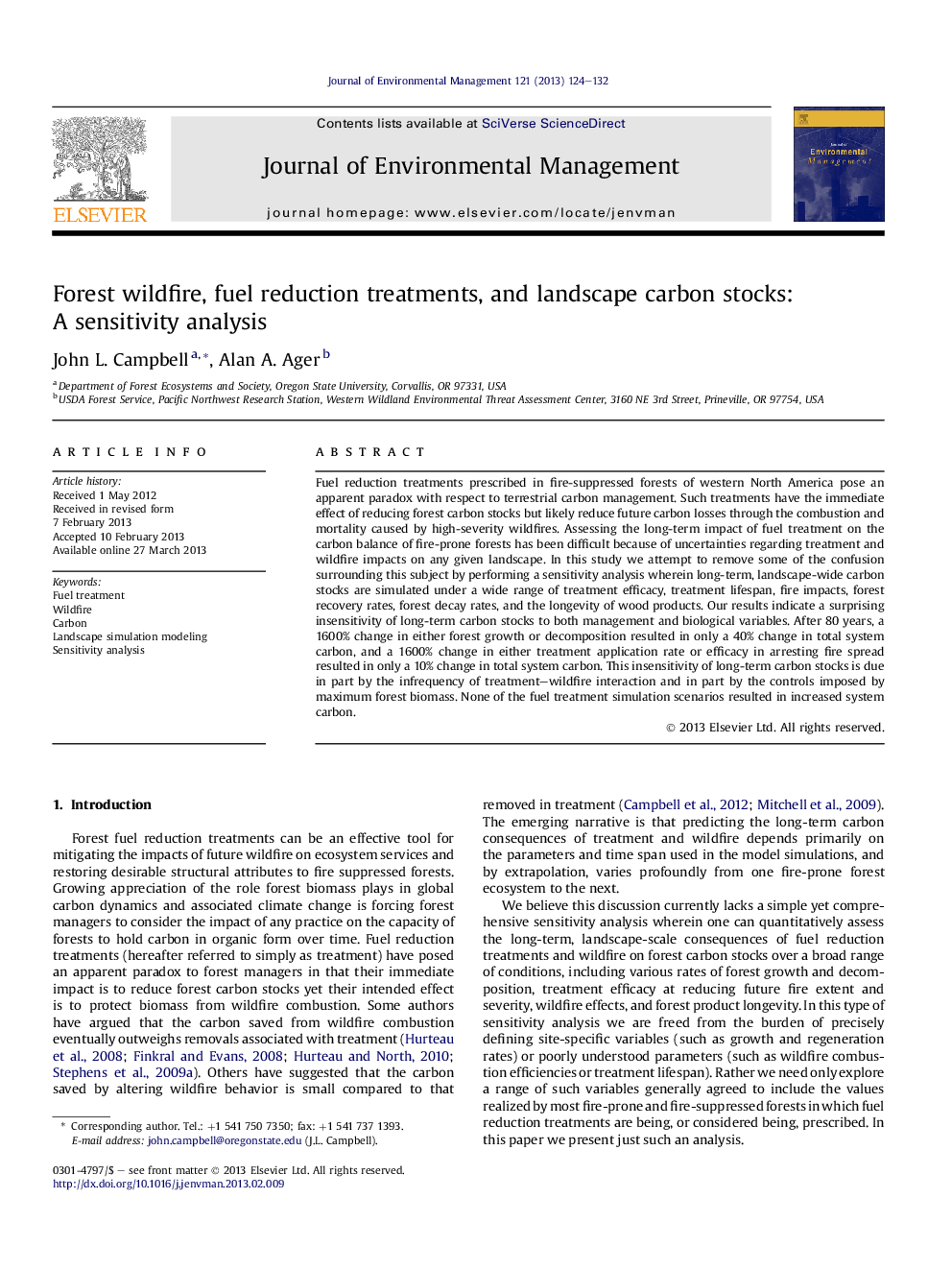| کد مقاله | کد نشریه | سال انتشار | مقاله انگلیسی | نسخه تمام متن |
|---|---|---|---|---|
| 1056362 | 1485291 | 2013 | 9 صفحه PDF | دانلود رایگان |

Fuel reduction treatments prescribed in fire-suppressed forests of western North America pose an apparent paradox with respect to terrestrial carbon management. Such treatments have the immediate effect of reducing forest carbon stocks but likely reduce future carbon losses through the combustion and mortality caused by high-severity wildfires. Assessing the long-term impact of fuel treatment on the carbon balance of fire-prone forests has been difficult because of uncertainties regarding treatment and wildfire impacts on any given landscape. In this study we attempt to remove some of the confusion surrounding this subject by performing a sensitivity analysis wherein long-term, landscape-wide carbon stocks are simulated under a wide range of treatment efficacy, treatment lifespan, fire impacts, forest recovery rates, forest decay rates, and the longevity of wood products. Our results indicate a surprising insensitivity of long-term carbon stocks to both management and biological variables. After 80 years, a 1600% change in either forest growth or decomposition resulted in only a 40% change in total system carbon, and a 1600% change in either treatment application rate or efficacy in arresting fire spread resulted in only a 10% change in total system carbon. This insensitivity of long-term carbon stocks is due in part by the infrequency of treatment–wildfire interaction and in part by the controls imposed by maximum forest biomass. None of the fuel treatment simulation scenarios resulted in increased system carbon.
Figure optionsDownload as PowerPoint slideHighlights
► Wildfire rarity limits treatment–wildfire interaction.
► Large changes in treatment rate or efficacy produce only small changes in C stocks.
► Large changes in growth or decomposition produce only modest changes in C stocks.
► C stocks appear most sensitive to site-specific maximum forest biomass.
► Fuel treatments reduce wildfire but do not increase C stocks.
Journal: Journal of Environmental Management - Volume 121, 30 May 2013, Pages 124–132